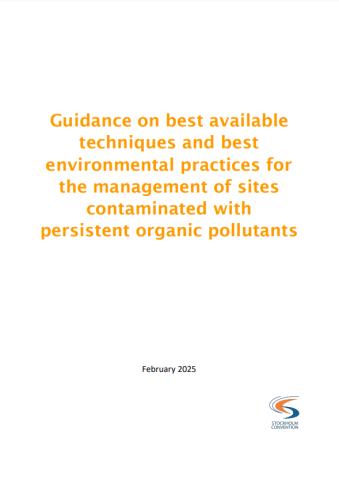
This guidance provides information to define contaminated sites and an evidence-based approach to identify, inventory and manage persistent organic pollutants (POPs) contaminated sites. This allows for the prioritisation of sites at the national level to focus resources on sites that present the highest risk to human health and the environment.
The guidance is structured into 10 modules in a stepwise manner and follows the usual practical order of tasks included in the management of a contaminated site such as identification, assessment, management, remediation and site monitoring and aftercare.
It covers broader theory and principles management of POPs contaminated sites, a review of techniques and technologies to treat POPs contamination and destroy wastes, stakeholder engagement frameworks and a case study of a recent DDT contaminated site remediation. A module is dedicated to describe the broad legislative, policy and inventory approaches that are important for a country to establish its contaminated sites program and implement the technical measures that have been described in previous modules.
- Module 1 Background on POPs Contaminated Sites
- Module 2 Principles and Approaches for POPs Contaminated site Management and Remediation
- Module 3 Site investigation, Assessment and Conceptual Site Model
- Module 4 Environmental Risk Assessment
- Module 5 Remediation Technologies and Techniques
- Module 6 Technology Selection Tool for Remedial Options
- Module 7 Stakeholder Engagement, Public and Worker Safety and Health
- Module 8 Contaminated Sites Remediation and Monitoring and Aftercare
- Module 9 Getting started: Legislation, Policy, Inventory Development and Financing Remediation
- Module 10 Case Study: DDT remediation Lâm Hoá site, Viet Nam
